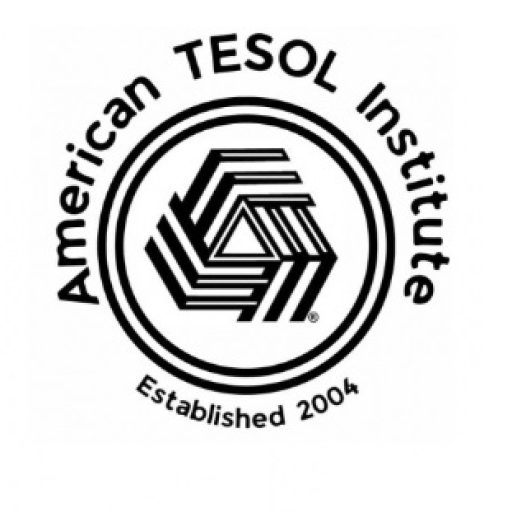In the rapidly evolving world of education, technology has become an essential part of the classroom, and language learning is no exception. The rise of Machine Translation (MT) and Artificial Intelligence (AI) is transforming how TESOL (Teaching English to Speakers of Other Languages) educators approach their lessons. In 2024 and 2025, these tools have become more sophisticated, accurate, and accessible, offering unprecedented opportunities for enhancing language acquisition.
This article explores how TESOL teachers can effectively integrate machine translation and AI tools into their classrooms to boost student learning, foster engagement, and prepare learners for a tech-driven future.
What is Machine Translation (MT) and AI?
- Machine Translation (MT) is the use of software to automatically translate text or speech from one language to another. Popular tools like Google Translate, DeepL, and Microsoft Translator are continually improving their capabilities, becoming more accurate in both common and lesser-known languages.
- Artificial Intelligence (AI) in language learning refers to intelligent systems that can simulate human-like understanding and communication. These tools, like ChatGPT or Duolingo’s AI-driven lessons, analyze vast amounts of language data to assist students in learning grammar, vocabulary, pronunciation, and more.
In 2024 and 2025, these technologies have advanced to the point where they can play a vital role in the classroom, not as a replacement for teachers, but as a supplement that enhances the learning experience.
How Machine Translation & AI Can Benefit Language Learning
- Boosting Confidence in Communication
- One of the most significant challenges for language learners is the fear of making mistakes when speaking or writing in English. AI-powered tools and MT systems provide students with a safety net by allowing them to experiment with language and receive real-time feedback on their errors. This can lead to increased confidence, especially when communicating in real-world situations.
- Supporting Multilingual Classrooms
- In diverse classrooms where students speak multiple native languages, machine translation tools can help bridge communication gaps. Teachers can use MT to ensure that instructions are understood by all students, regardless of their linguistic background. This is particularly helpful for beginners who may still be developing their English proficiency.
- Immediate and Personalized Feedback
- AI-powered tools like Grammarly or language learning apps with AI feedback provide instant corrections and suggestions for improvement. For students writing essays, emails, or even engaging in dialogue practice, these tools offer personalized feedback on grammar, word choice, and sentence structure. This allows learners to self-correct and progress more rapidly.
- Expanding Access to Authentic Materials
- Machine translation tools enable students to access a broader range of content in their target language. For example, students can translate articles, videos, or blog posts to understand their content, which increases exposure to authentic English usage in various contexts. While MT tools are not perfect, they provide a valuable resource for accessing information that would otherwise be out of reach.
- Enhancing Pronunciation Practice
- AI-powered speech recognition tools, such as those found in Google Assistant or apps like Elsa Speak, help students work on pronunciation. These systems analyze students’ spoken English, offering feedback on pronunciation, intonation, and fluency. As students practice, they receive targeted recommendations on how to improve, making it easier to develop clear and accurate speech.
- Facilitating Writing and Translation Projects
- Machine translation can be integrated into writing exercises, allowing students to compare translations and improve their understanding of language structures. Teachers can assign activities where students write essays, stories, or dialogues in their native language and then translate them into English using an MT tool. By comparing their translations with AI’s output, students gain insight into linguistic nuances and syntax.
Best Practices for Integrating MT and AI in the TESOL Classroom
To make the most of these powerful tools, TESOL educators should be strategic in how they incorporate machine translation and AI into their lessons. Here are some best practices:
- Teach Critical Thinking Around Translation
- Machine translation is a helpful tool, but it’s not perfect. Encourage students to think critically about the translations they receive. For example, have them compare MT outputs with human translations and discuss any inaccuracies or awkward phrasing. This activity will help students understand the limitations of MT while improving their language skills.
- Use AI as a Complement, Not a Crutch
- While AI and MT tools provide valuable assistance, they should not replace traditional learning methods. Encourage students to use these tools as a complement to their studies, not a crutch. Emphasize that AI is there to support them, but practicing language without these aids is crucial for long-term success.
- Engage in Collaborative AI Projects
- Create collaborative classroom projects that leverage AI tools. For example, students can work in groups to create podcasts, newsletters, or short stories, using AI-powered apps for writing, editing, or even voice-over assistance. This kind of collaboration fosters creativity while utilizing AI for practical language learning.
- Integrate AI Feedback into Writing Exercises
- Instruct students to draft essays or reports and run them through AI-powered tools like Grammarly or ProWritingAid for feedback on grammar, structure, and style. Afterward, ask them to manually revise their work based on the suggestions. This combination of AI-generated feedback and human revision improves both accuracy and understanding.
- Promote Intercultural Communication with MT
- Use machine translation to expose students to multiple languages and cultures. For example, students can exchange messages with pen pals from other countries, using MT to translate their native language into English. This kind of real-world application helps students develop cross-cultural communication skills while seeing MT in action.
Tools and Apps for the Modern Language Classroom
Here are some of the most effective MT and AI-powered tools for TESOL teachers in 2024 and 2025:
- Google Translate (Free)
- Still one of the most widely-used machine translation tools, Google Translate now offers real-time translations and features like conversation mode and image translation (where students can point their phone camera at text to get an instant translation).
- DeepL (Free & Paid Versions)
- Known for its higher accuracy in translating nuanced texts, DeepL has become a preferred MT tool for more advanced translation needs. It’s particularly useful for academic writing or understanding idiomatic expressions.
- Grammarly (Free & Paid Versions)
- Grammarly’s AI-powered grammar checker is invaluable for students working on their writing skills. The platform not only corrects grammar but also gives explanations, helping students understand their mistakes and learn from them.
- Elsa Speak (Free & Paid Versions)
- An AI-powered app designed to help students with pronunciation and fluency, Elsa Speak provides personalized feedback on individual sounds and overall fluency. Its speech recognition technology pinpoints pronunciation errors and offers tailored exercises.
- ChatGPT (Free & Paid Versions)
- As a conversational AI, ChatGPT can simulate conversations, answer questions, and explain complex grammatical concepts. Teachers can use it to generate lesson ideas, create dialogues for role-playing, or explain difficult language points to students.
- Microsoft Translator (Free)
- A competitor to Google Translate, Microsoft Translator is highly effective for translating both text and spoken conversations in real time. It also offers translation features for online meetings—a useful tool for remote learning or cross-cultural exchanges.
Challenges and Ethical Considerations
While AI and machine translation tools offer great benefits, there are also challenges and ethical considerations to keep in mind:
- Over-Reliance on Technology
- There is a risk that students might become too dependent on AI and MT, using them as shortcuts rather than learning the underlying grammar and language structures. It’s important for teachers to encourage independent language practice alongside these tools.
- Accuracy & Context
- Machine translation tools can sometimes provide inaccurate translations, especially with idiomatic expressions, colloquialisms, or languages that rely on cultural context. Teachers should guide students in double-checking translations and understanding when MT is useful—and when it’s not.
- Privacy & Data Security
- As many AI tools collect data, educators must be aware of privacy concerns. Always choose trusted platforms and inform students about data privacy when using AI or MT tools, particularly in classrooms where sensitive information might be shared.
Conclusion
The integration of machine translation and AI tools in the TESOL classroom represents an exciting step forward in education. By carefully blending traditional teaching methods with cutting-edge technology, teachers can enhance the language learning experience, making it more engaging, personalized, and effective.
In 2024 and 2025, these tools are not just a trend but a valuable resource that prepares students for a tech-driven world. As teachers, we must guide learners in using these tools responsibly, fostering both linguistic competence and critical thinking in the age of AI.
By embracing the possibilities of machine translation and AI, we can help our students thrive in an interconnected, multilingual world. ??



